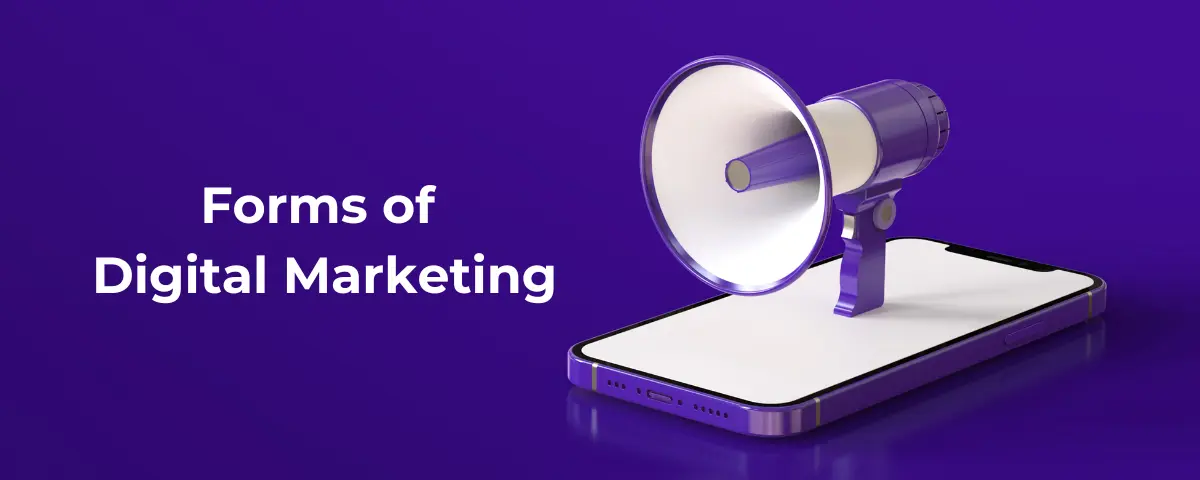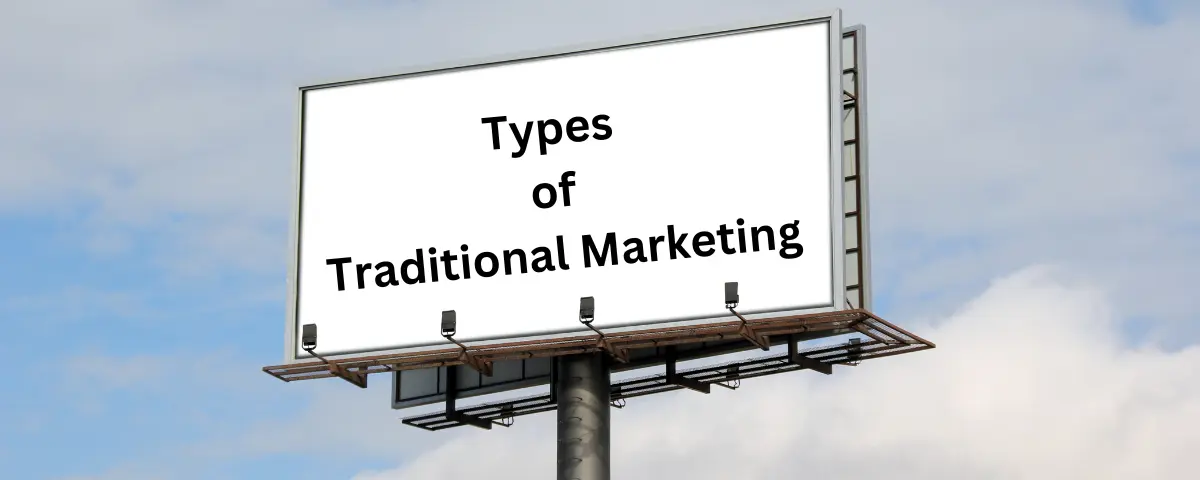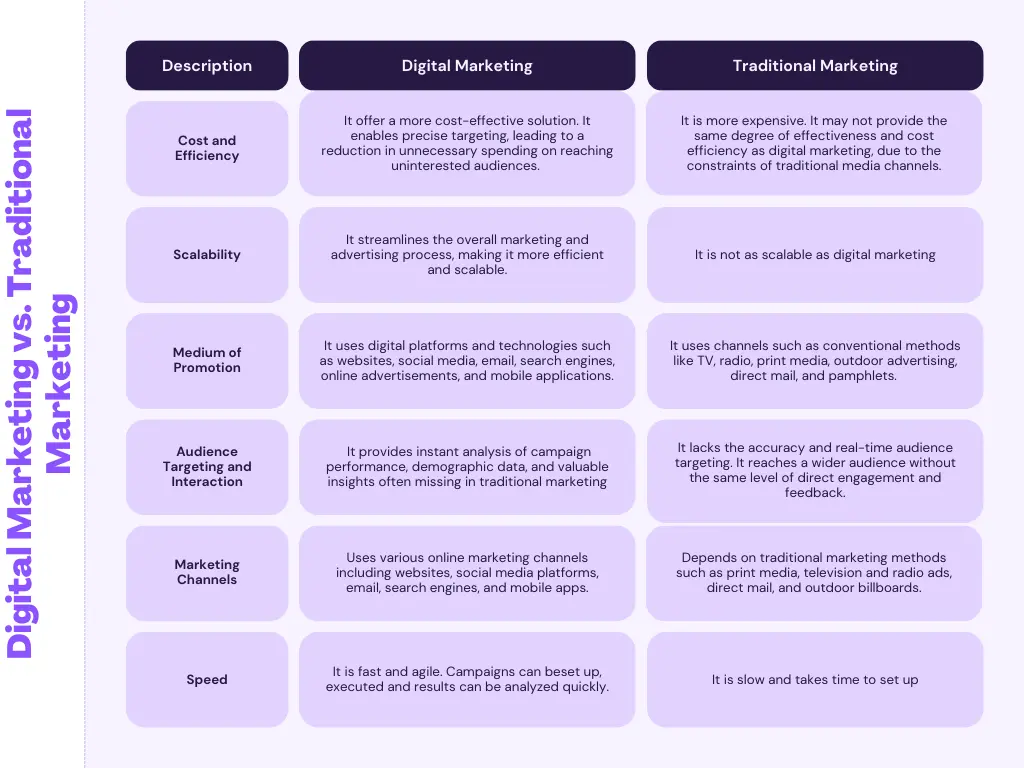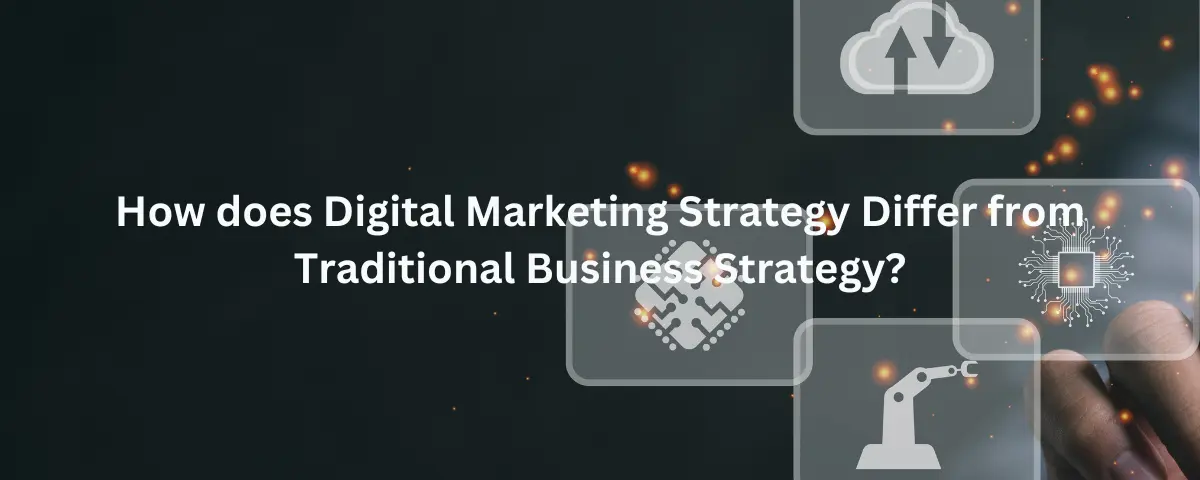In 2024, the marketing industry is undergoing a substantial transformation toward digital strategies, as shown by various statistics that reflect the trends and preferences driving this change. For instance, between 2023 and 2024, digital marketing budget spending had a 10% growth rate across businesses. This puts the battle between digital marketing vs traditional marketing to be in favour of digital marketing.
Why is this so?
It is simply that as technology continues to influence consumer behavior and preferences, marketers are challenged to adapt their strategies to strike the right balance between traditional marketing tactics and digital approaches. This requires a blend of creativity and data-driven insights to effectively connect with consumers.
If you want to fully understand digital marketing and how you can use it to achieve your business or marketing goals, you should check out this digital marketing training to acquire the right skills.
In this article, we will also look into what digital and traditional marketing are, and how you can use them to determine the best approach for your business’s unique needs and goals.
What is Digital Marketing?

Digital marketing is the promotion and selling of products or services using digital technologies, mainly on the Internet, as well as on mobile phones, display ads, and other digital platforms.
It involves using digital channels to connect with target audiences. The aim is to increase brand awareness, engage customers, and drive sales. Digital marketing is often combined with traditional marketing efforts, and it’s seen as an effective way for companies to interact with consumers and understand their behavior.
The Benefits of Digital Marketing
Digital marketing presents numerous advantages that can greatly benefit businesses.
Local and Global Reach
Digital marketing offers businesses the opportunity to reach both a global and local audience, enabling them to target a wide range of customers and grow their client base. This worldwide reach allows businesses to engage with potential customers across the globe at a more cost-effective rate compared to traditional marketing techniques.
Cost-effectiveness
Digital marketing offers affordable solutions, making it accessible even for small businesses with limited resources. Strategies such as SEO, social media, and content marketing have minimal upfront costs. It also allows you to reach the right target audience efficiently making it easy to communicate and interact with customers.
Tangible Result
With digital marketing, you can measure the outcomes of your effort. This gives you valuable information about how well your marketing tactics are working. Various digital tools streamline the process of monitoring and evaluating campaign success, enabling businesses to allocate marketing resources with greater precision.
Personalized Marketing
Unlike traditional TV or print ads, digital marketing lets you create personalized ads that fit each person’s unique needs and preferences. You can customize your marketing campaigns across different digital channels, which helps you make better decisions and reduces mistakes.
Better Engagement
If the focus is on engaging with the desired audience, digital marketing allows businesses to target specific demographics using online data and insights. This enables businesses to personalize their marketing efforts and gather valuable data to improve future campaigns
Forms of Digital Marketing

Some popular types of digital marketing include:
Search Engine Optimization (SEO)
This involves optimizing website content to achieve higher rankings in search engine results pages (SERPs). By improving your SEO, you can attract more organic traffic and potential customers to your business.
Pay-Per-Click (PPC) Advertising
This entails creating and placing online ads that are paid for each time a user clicks on them. PPC advertising enables marketers to connect with audiences across different digital platforms ( Google, LinkedIn, Twitter, Pinterest, and Facebook) who are actively seeking products or services similar to their own.
Social Media Marketing
Social media marketing is a widely used form of digital marketing, with over 5.07 billion people around the world now using social media. It allows businesses to interact with their target audience, advertise their products, and increase brand recognition.
Content Marketing
Content marketing is the creation and distribution of valuable, relevant, and consistent content to attract and retain a specific audience. It includes different types of content such as blog posts, videos, and infographics, and is an essential part of digital marketing strategies.
Email Marketing
Email marketing remains a cornerstone of digital marketing strategies, allowing businesses to communicate with customers, share product information, and drive engagement. It is an essential tool for reaching and retaining customers.
Mobile Marketing
This is a form of digital marketing that utilizes mobile devices to reach and engage target audiences. This includes strategies such as mobile-friendly websites, SMS marketing, and mobile advertising. As the use of mobile devices continues to rise, mobile marketing has become an essential component of any marketing strategy.
Influencer Marketing
Influencer marketing involves collaborating with influential individuals on social media to promote products and services. It has gained prominence as a powerful form of affiliate marketing, leveraging the reach and influence of popular social media personalities.
Video Marketing
Video marketing is a highly effective tool in the field of digital marketing. It involves creating and sharing video content on platforms such as YouTube, TikTok, and Instagram to actively engage with audiences. By incorporating video content, businesses can interact with their target audience in a more engaging and visually appealing manner.
Display Advertising
Display advertising helps businesses connect with their desired audience through visually compelling advertisements on websites, social media platforms, and mobile applications. When you strategically place your ads in front of users based on their browsing habits and preferences, companies can enhance their brand visibility and attract more traffic to their websites.
What is Traditional Marketing?

Traditional marketing is a promotional strategy that focuses on reaching audiences through offline channels. Marketers engage with consumers in person by placing marketing materials in physical locations where their target audience is likely to come across them.
Examples of traditional marketing tactics include radio and TV ads, billboards, and direct mail. This method relies on one-way communication, where businesses deliver messages to consumers through these offline channels.
While still used today, traditional marketing is often seen as less targeted and measurable compared to the more data-driven and interactive approaches of digital marketing.
However, many businesses find success in integrating traditional and digital marketing strategies to reach a wider audience and create a more cohesive brand presence across multiple channels.
The Benefits of Traditional Marketing
Traditional marketing is still beneficial to businesses despite the increasing popularity of digital marketing. Below are some of the benefits of including it in your strategies:
Broader Reach
Traditional marketing methods offer the advantage of reaching a larger audience. Platforms such as print ads, TV, and radio continue to attract diverse demographics, including those who are not as engaged online for instance the elderly. So by adding traditional marketing strategies to your plan, businesses can access new markets and extend their reach beyond digital platforms.
Trust and Credibility
Traditional marketing methods, such as print ads and TV commercials, can help establish trust and credibility for your brand. These channels are often seen as more established and reputable, which can reassure potential customers about the legitimacy of your business and offerings.
Local Targeting
When you use traditional marketing channels, such as local newspaper ads, community event sponsorships, or direct mail campaigns, it can be highly effective for reaching and engaging with customers in a specific geographic area. This makes it a valuable tool for small businesses and organizations looking to connect with their local community.
Emotional Connection
Traditional marketing also has the power to evoke emotions and create lasting impressions. When you use compelling storytelling, and memorable slogans in print ads, TV commercials, or billboards can help your brand forge emotional connections with your target audience, making your message more impactful and memorable.
Types of Traditional Marketing

There are many offline advertising strategies that businesses can use to promote their products or services. So using these combinations can often be effective to reach their target audience.
Outdoor Advertising: Billboards
Outdoor advertising is a successful traditional marketing method for reaching a large audience. This includes things like billboards, transit ads, banners, and posters. They are often placed along highways, roads, and busy streets, making them a highly visible and effective way to reach a wide audience. By carefully choosing where to place their advertisements, companies can increase visibility, build brand awareness, and ultimately drive more sales.
Print Marketing
Print marketing is a form of advertising that uses print media such as newspapers, magazines, brochures, flyers, and direct mail. It continues to be a highly effective marketing strategy to promote goods and services. These materials can be distributed through mail, handed out in person, or placed in public areas to reach a targeted audience.
Broadcast Marketing
Broadcast marketing entails reaching a broad audience through radio, television, or other media outlets. This approach enables businesses to display their products or services to a large number of potential customers at once. You can use this strategy for your business by strategically placing advertisements during popular programs or events. That way, you can increase your brand’s awareness and boost sales.
Telemarketing
Telemarketing is a marketing strategy that involves contacting customers through phone calls and text messages. It became popular in the 1970s and was seen as an effective way to engage with customers on a personal level. Using phone calls to reach out to potential customers enables businesses to interact directly with their target audience and effectively communicate their message. The personal connection of a phone call can help to create a relationship and build trust with potential clients.
Direct Mail Marketing
Direct mail marketing is a strategy where printed materials, such as brochures, letters, postcards, catalogs, and flyers, are sent directly to customers through the mail. This targeted marketing approach is focused on specific audiences or markets and is conducted professionally.
Branded Merchandise
This involves the distribution of branded merchandise, including items such as calendars, pens, t-shirts, pens, and other promotional products,. It is a classic marketing strategy that effectively maintains a company’s brand presence in the minds of customers all year round. By featuring your logo or slogan on products like t-shirts, pens, or mugs, you can successfully promote your brand tangibly and memorably.
Differences between Digital Marketing and Traditional Marketing
Pros and Cons of Traditional Marketing
Traditional marketing has been around for a long time and has its own set of pros and cons. Let’s take a look at some of them:
Pros
- Traditional marketing is commonly used by most businesses because it has been around for a long time. It helps reach local customers and build personal relationships with them.
- It is crucial for reaching the local audience and building personal relationships with customers.
- It is more difficult to overlook, as it enables businesses to engage prospects with their brand, value proposition, message, and products through public multimedia campaigns.
Cons
- Some conventional marketing techniques may not be as effective when taking into account the different channels available for businesses to promote their services or products.
- Conventional marketing typically incurs higher expenses, including costs for various media channels like newspapers, radio, and billboards.
- Traditional marketing may not offer the same level of instant measurement of campaign effectiveness and audience demographics as digital marketing does.
Pros and Cons of Digital Marketing
Digital marketing has transformed how businesses advertise their products and services, presenting a variety of benefits and drawbacks.
Pros
- Digital marketing allows for the development of captivating campaigns utilizing a range of content marketing strategies, including videos, articles, and social media posts, that have the potential to gain social traction and go viral.
- It provides a cost-effective solution for businesses to effectively reach and engage with their target audience.
- Digital marketing offers businesses extensive access to the global market, enabling them to connect with a large audience in various geographical areas.
Cons
- Digital marketing relies heavily on digital technology and internet connectivity, making it susceptible to technical glitches and failures.
- Although it provides businesses with a global reach, they also face tough competition on a global scale. This makes it difficult to distinguish themselves and capture the attention of consumers amidst the multitude of messages online.
How does Digital Marketing Strategy Differ from Traditional Business Strategy?

it is essential to analyze the unique objectives and methodologies of both digital marketing vs traditional marketing. A digital marketing strategy varies from a traditional business strategy in several significant ways.
Below are some of the ways:
Flexibility: Digital marketing campaigns can be easily adjusted and improved in real time based on performance data. Traditional marketing has limited flexibility once a campaign is launched.
Reach and Targeting: Traditional business strategies typically aim to reach a broad audience through mass marketing efforts, utilizing traditional advertising channels like television, radio, and print media. On the other hand, digital marketing strategies focus on targeting specific audience segments and engaging with them on a more personalized level.
Integration and Adaptation: Traditional business strategy Involves incorporating conventional business methods like managing supply chains, distribution, and brick-and-mortar retail stores into the company’s overall strategy. On the other hand, digital marketing strategy involves using marketing techniques such as content marketing, SEO, social media, and online advertising into the larger marketing and business strategy. It also requires staying up-to-date with changing digital trends and technologies.
Digital Marketing vs Traditional Marketing: Which is better in 2024?
The comparison between digital marketing and traditional marketing is complex, and the decision between the two depends on several factors.
Digital marketing provides benefits like targeted audience reach, real-time interaction, and cost-effectiveness, while traditional marketing excels in reaching a broader audience and creating an immediate brand presence. It is crucial to recognize that both methods serve distinct purposes and can be effective depending on the business and its audience.
However, according to 2024 statistics, digital marketing showcases numerous significant advantages in comparison to traditional marketing. The following key statistics emphasize the efficacy of digital marketing:
- Digital ad spending worldwide reached $485 billion in 2023 and is projected to grow to $526 billion by the end of 2024, indicating the increasing investment and effectiveness of digital advertising according to this report.
- According to this blog post, mobile commerce accounted for 43.3% of all eCommerce sales in 2023, showing an increase from the previous years, indicating the growing importance of mobile platforms in consumer purchasing behavior.
- This report also says video marketing, a subset of digital marketing is on the rise, with 92% of businesses considering it one of the most important parts of their digital marketing strategies.
- Display advertising spending is projected to reach $352.3 billion, while search advertising will amount to $190.5 billion by the end of 2024, showcasing the substantial investment in digital ad formats according to this post.
The general agreement in the digital space is that the choice between digital marketing vs traditional marketing should be made after carefully understanding the business and its target audience. But for 2024, digital marketing has the upper hand over traditional marketing.
Conclusion
Digital marketing is often seen as a more cost-effective option that can be tailored to reach specific groups of people while keeping expenses down. It also provides the opportunity to gather valuable information about the audience quickly. In contrast, traditional marketing may be more successful in reaching a wider audience and quickly establishing a brand presence, particularly for local or older demographics.
In 2024, the advantages and effectiveness of digital marketing as compared to traditional marketing in the battle of digital marketing vs traditional marketing may make it a better and faster option. However, the marketer will need to do a thorough study of the unique requirements, target demographic, and objectives of the business or brand.
This is because both digital marketing and traditional marketing are still important and offer unique advantages. Each strategy has its advantages, and the best strategy may involve combining aspects of both to form a well-rounded marketing approach.
I am going to stop here, if you want to learn how you can acquire the right marketing strategies to grow your business, do check out our digital marketing course page on how we can help you achieve that.
FAQ
What is an example of digital marketing?
Ever see an interesting ad while scrolling through social media? That’s digital marketing! It’s an online promotion of a product or service. Think social media posts, engaging videos, or even those targeted search engine ads. If you see it online and it’s trying to grab your attention, that’s digital marketing at work.
How do I choose between digital and traditional marketing for my business?
The best marketing approach depends on your specific business goals, target audience, and budget. Digital marketing is generally more cost-effective and measurable, with the ability to precisely target and engage customers online. However, traditional marketing can still be effective for reaching local audiences, building brand credibility, and creating emotional connections. Many businesses find success by integrating both digital and traditional tactics to create a comprehensive, omnichannel marketing strategy.
Why is digital marketing better than traditional?
Digital marketing stands out in today’s world for several reasons:
- Targeted Reach: you can specifically target your ideal customers online, rather than relying on the chance that they will see your billboard.
- Measurable Results: You can track clicks, likes, and conversions to determine what strategies are effective and make adjustments as needed.
- Two-Way Communication: Digital marketing allows for direct engagement with your audience, enabling you to build relationships and receive real-time feedback.
- Cost-Effective: Digital marketing is often more affordable than traditional methods, particularly when trying to reach a global audience.
Digital marketing offers a professional and efficient way to connect with your target audience and achieve your marketing goals.
Is traditional marketing still effective in the digital age?
While digital marketing has become the dominant strategy for most businesses, traditional marketing methods still have an important role to play. Traditional channels like print, TV, radio, and direct mail can be effective for reaching specific demographics, building brand awareness, and creating memorable impressions. For example, direct mail has a higher response rate than email, and TV ads can drive significant traffic to websites. Traditional marketing also provides opportunities for local engagement through community events, sponsorships, and in-person interactions. The most successful marketing plans integrate the best of both digital and traditional tactics to maximize reach and impact.
More Posts
What Is Social Listening & Why Is It Important?
How to Grow Your Small Business Using Instagram in 2024
11 Effective Ways to Use Social Media to Promote Your Content
Marketing vs Advertising: How Are They Different?


